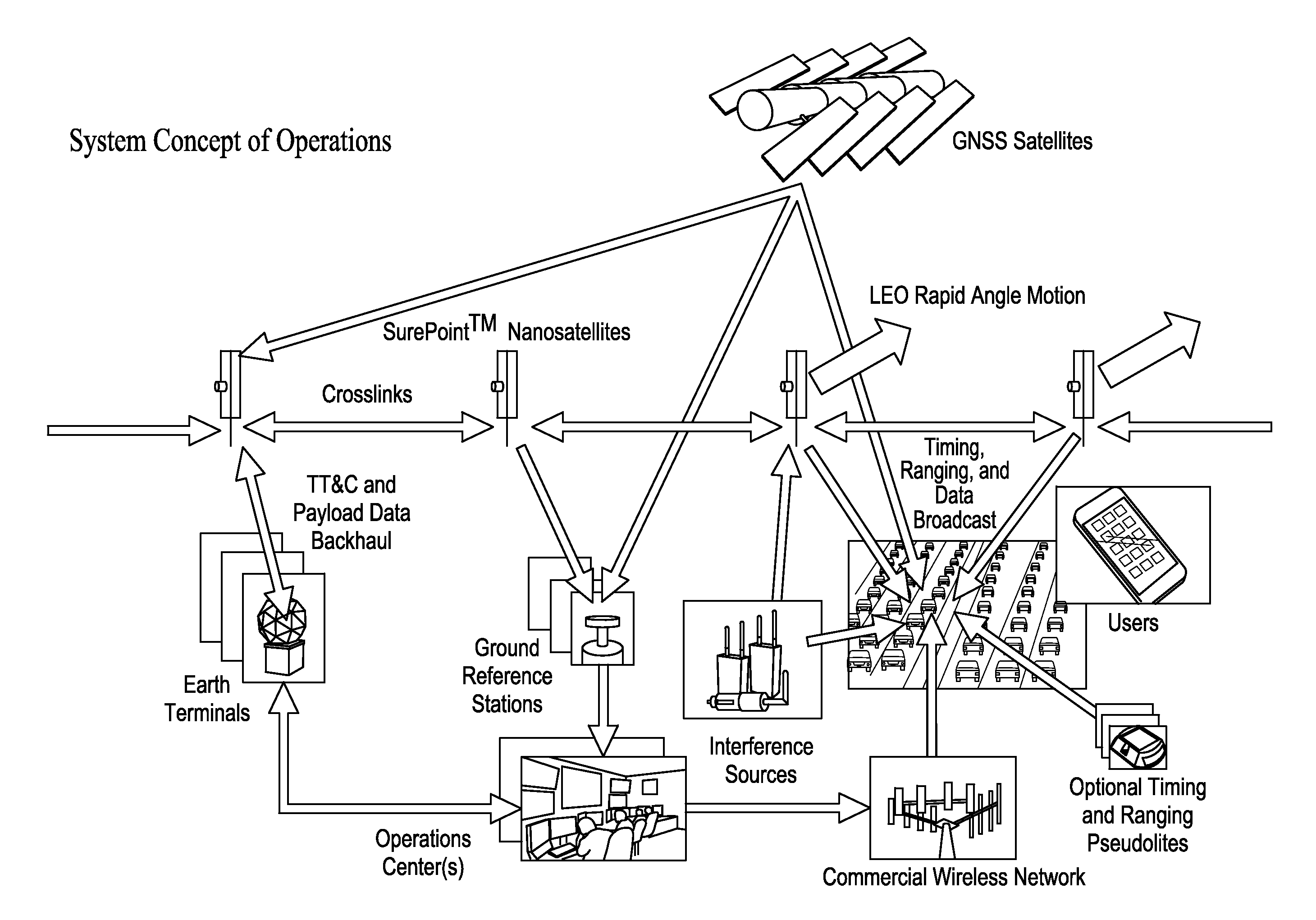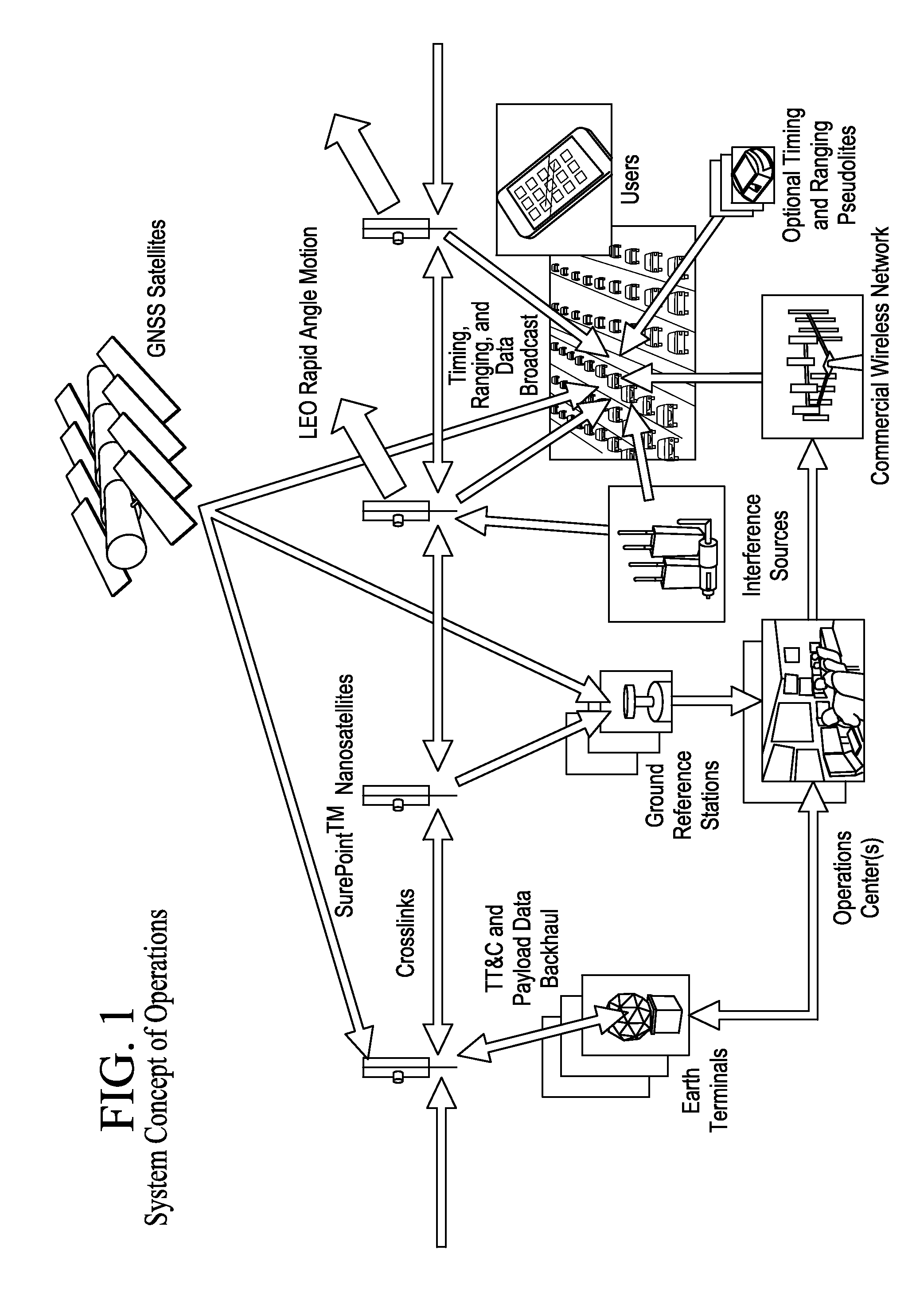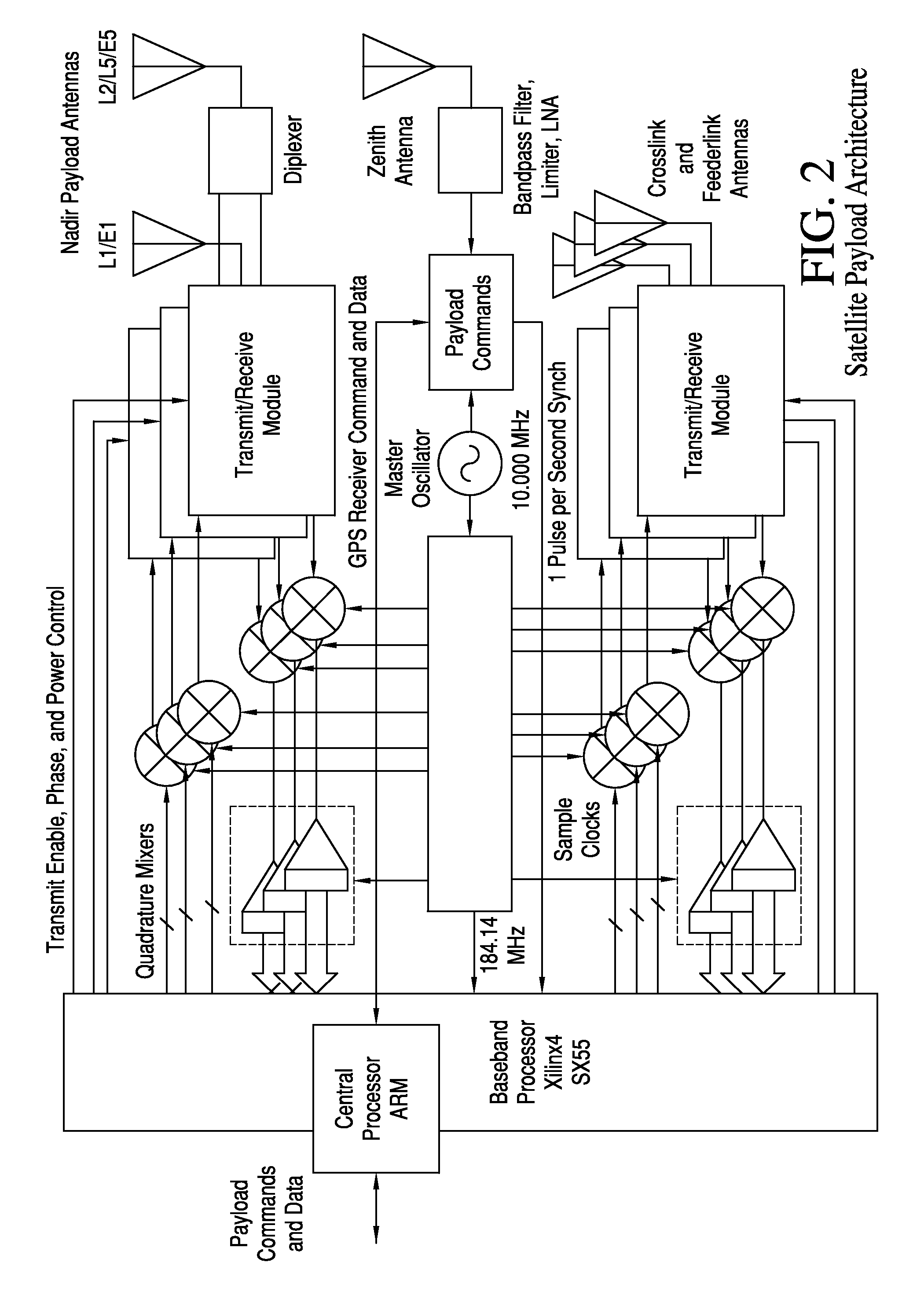Performance and Cost Global Navigation Satellite System Architecture
a global navigation satellite and system architecture technology, applied in satellite radio beaconing, measurement devices, instruments, etc., can solve problems such as large disruption, system broadcast power very low, interference, etc., and achieve the effect of speeding up the takedown tim
- Summary
- Abstract
- Description
- Claims
- Application Information
AI Technical Summary
Benefits of technology
Problems solved by technology
Method used
Image
Examples
Embodiment Construction
[0086]It is an object of the invention to provide both high performance, globally scalable PNT—even under interference, jamming, spoofing, and other tampering—yet drive towards low cost, while particularly enabling the use of existing user equipment when upgrading the installed base is otherwise prohibitive. Traditionally, the response to higher power interference is a higher power signal. Rapid angle motion and the coherent precision of carrier phase provide an underlying physical foundation for improved performance. It is an object of the invention to apply new information, networks, global agility, and advanced signal processing to accomplish improvements in availability, assurance, and resiliency that are affordable.
Global Architecture
[0087]The overall system concept of operations, as depicted in FIG. 1, is a distributed, networked system robust to failures, interference, and attacks. In the preferred embodiment, each satellite employs single-string redundancy. Augmenting the GN...
PUM
 Login to View More
Login to View More Abstract
Description
Claims
Application Information
 Login to View More
Login to View More - R&D
- Intellectual Property
- Life Sciences
- Materials
- Tech Scout
- Unparalleled Data Quality
- Higher Quality Content
- 60% Fewer Hallucinations
Browse by: Latest US Patents, China's latest patents, Technical Efficacy Thesaurus, Application Domain, Technology Topic, Popular Technical Reports.
© 2025 PatSnap. All rights reserved.Legal|Privacy policy|Modern Slavery Act Transparency Statement|Sitemap|About US| Contact US: help@patsnap.com



